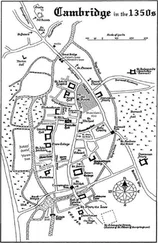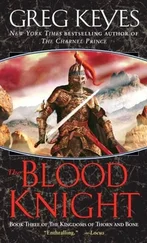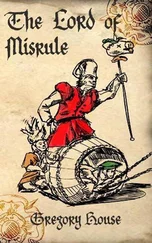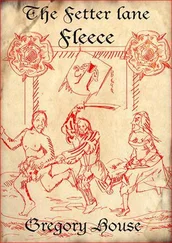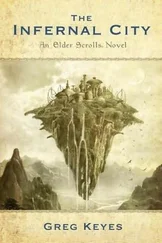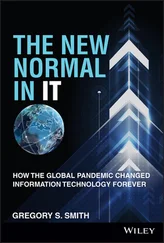“Sorry, Bill,” said Markham, entering. “Had to stop by in-processing to get the paperwork started for Dr. Hildebrant. Cathy, you remember Special Agent in Charge Bill Burrell?”
There were others seated around the large conference table, but only Burrell and Rachel Sullivan rose to greet her.
“Yes, of course,” Cathy said. “A pleasure to see you again. And you, too, Special Agent Sullivan.”
“Call me Rachel.”
“And you can call me Bill,” said Burrell. “Please, be seated.”
An FBI agent to whom Cathy was introduced-and whose name she immediately forgot-vacated his seat for her at the far end of the table, and Cathy and Markham took their places across from Burrell and Sullivan-a large video screen on the wall before them. Cathy suddenly noticed another man on all fours-his rear poking out of a closet that seamlessly blended in with the rest of the walnut paneled walls.
“You’ll have to forgive us,” began Burrell, “but we’re having a bit of technical difficulties this morning. Can I get you something to drink? Coffee or something?”
“No thank you. Sam-I mean, Special Agent Markham already offered.”
“Then he already briefed you on what to expect today?”
“Yes, he did.”
“Good,” said Burrell. “First off then, on behalf of the Federal Bureau of Investigation I would like to officially welcome you on board. I want to also thank you personally for all your help thus far, and for agreeing to work with us as we move forward on this case. You’ve been an invaluable asset to us in developing the profile for this killer, Cathy. I assume that, on your ride up from Providence, Sam here brought you up to date on where things stand at this point? Told you about the development regarding your former student Gabriel Banford, and the possibility of his being linked to this psychopath the press is calling The Michelangelo Killer?”
“Yes.”
“Rachel here is overseeing that end of things. She will be working on the Banford case file with the hopes of finding a more concrete link between him and the killer-mutual acquaintances, Internet records from the postings on Craigslist, that kind of thing. Her team will also be looking into all the unsolved missing person cases in Rhode Island and its immediate vicinity dating from the Banford murder to the present-cases involving other young men who this Michelangelo Killer might have abducted and experimented with before he got to Wenick and Campbell.”
“You see, Cathy,” said Markham, “serial killers tend to consciously select their victims from one particular demographic-victims who meet certain criteria that, for whatever reason, gratify the serial killer’s deeper psychological motivations to murder-motivations of which the killer might be either unconscious or sometimes fully aware.”
“That’s right,” said Burrell. “And given the profile that you and Markham have developed for this Michelangelo Killer so far, the murder of young males most likely is this guy’s MO. Therefore, Sullivan and her team will be specifically looking into the disappearance of young male prostitutes and drifters who were known to reside in Rhode Island and the surrounding area over the last six years. Not only does this fit the profile of Gabriel Banford, who we know had begun stealing and prostituting himself to help support his drug habit, but also these types of victims tend to be safer targets for serial killers in that, because so many of them move around from one place to another, their disappearances usually go unreported-and thus, in this case, would draw little attention to The Michelangelo Killer while he developed his craft.”
“Yes,” said Sullivan. “As Agent Markham probably informed you, we’re going to begin working from the premise that, after the Banford murder, The Michelangelo Killer would have wanted to develop his technique for preserving and painting his figures before the public unveiling of his Bacchus nearly six years later. However, we have another team working from the angle that the killer might have already been familiar with embalming, and thus they’ll be investigating funeral parlors, morticians, taxidermists, and others who not only would have that kind of working knowledge, but who would also have access to the types of chemicals needed to preserve a corpse. It’s those preliminary findings from the FBI labs at Quantico on which we’ll be briefed today. Once we have an idea of exactly how the killer went about preserving Campbell and Wenick, we’ll have much more to go on.”
“All set, Chief,” said the man whose behind had been sticking out of the wall. Cathy recognized him from Watch Hill-the “tech guy” who had set her up with the laptop that day.
Burrell nodded and the large video screen on the wall flickered to life-two men seated at a table, one in a suit, one in a white lab coat.
“We got a visual on you now, gentlemen,” said Burrell. “How about you?”
“Yes, Bill,” said the man in the suit. “We can see you fine.”
“Good. You know everybody else here, Alan, but I want to introduce you to Dr. Catherine Hildebrant. She’s agreed to come on board as a consultant in the case and will be assisting Sam down in Providence. Cathy, this is Alan Gates, chief of Behavioral Analysis Unit-2 at Quantico. Next to him is Dr. Gilbert Morris. He heads up the Chemistry Unit in Scientific Analysis back at the FBI Laboratory.”
The two men nodded their hellos.
“What have we got, gentlemen?”
“I talked to Special Agent Markham earlier this morning, Bill,” said Unit Chief Alan Gates, the man in the suit. “He’s updated me on the latest developments, so I’ll defer to him for the rest of this conference. Sam is officially in charge now from our end, and has expressed his utmost confidence in your team there-specifically Agent Sullivan and her outstanding work as coordinator between your office and the NCAVC.”
“Good,” said Burrell. “Dr. Morris?”
“Thank you, Bill. I’ve been instructed to tell you that the scientists in the Trace Evidence Unit will be submitting their report on the wooden base and the tree stump to your offices later today.”
“Fine.”
“With regard to Scientific Analysis, one of my assistants is preparing a breakdown of the specifics from each subunit as we speak, but I’ll give you a general overview of what we’ve found thus far.” The man in the white lab coat shuffled a pile of papers. “First off, we’ve found nothing more in the chemical makeup of the epoxy compound that was used to sculpt the lion skin, the bowl, and the figures’ hair that would identify it as anything other than the TAP brand Magic-Sculpt commonly sold on the Internet or in the arts and crafts stores in your area.”
“Good,” said Burrell. “I’ve already got people working on that angle.”
“The Toxicology Unit, in conjunction with the state medical examiner in Rhode Island, has confirmed that the high concentrations of synthetic epinephrine found in Tommy Campbell’s tissue did indeed lead to his death. Five years ago, we might have missed this, Bill, as the chemicals the killer used in the preservation process altered the base cell structure significantly. However, we still might not be able to get a pure enough sample of the epinephrine to allow us to trace the drug to a specific source. The same goes for the high-powered diazepam and ketamine. We’ll keep you updated as that investigation progresses.”
“Right.”
“Here in our labs at Quantico, we’ve been able to determine that the killer preserved his victims building on a technique called Plastination-a process where water and lipid tissues are replaced by curable polymers.”
“Plastination?” asked Burrell.
“Yes. A process of anatomical preservation being used more and more around the world, but first developed in the late seventies by a German scientist named Dr. Gunther von Hagens. There have been a number of his Body Worlds exhibitions in the last decade or so, but a similar show from a Chinese company recently drew a lot of worldwide attention and criticism. I’ve included those details in my report, but the general character of both the German and Chinese exhibitions is the same-a group of skinless, sometimes partially dissected cadavers posed in lifelike positions and put on display for public viewing. Individual plasticized body parts are also sold to medical and veterinary schools all over the world, but are nonetheless quite expensive.”
Читать дальше

